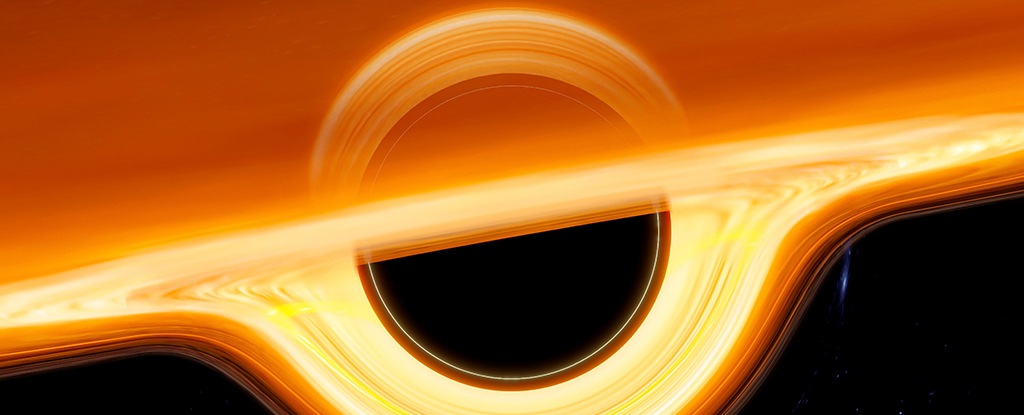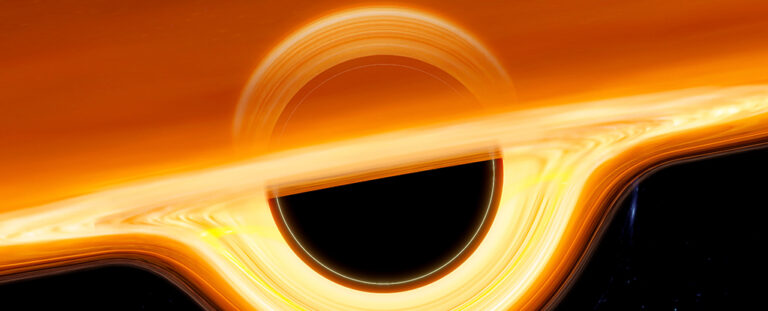Harnessing the Potential of a Theoretical Black Hole Might Unleash an Extraordinary Explosive Force
Black holes serve as incredibly powerful gravitational engines. It is logical to assume that there must be a method to harness their energy, and indeed, there is.
One approach involves tapping into the heat and kinetic energy of a black hole’s accretion disk and jets. However, even if we only had a black hole in empty space, we could still extract energy using a technique called the Penrose process.
The Penrose process, first proposed by Roger Penrose in 1971, allows for the extraction of rotational energy from a black hole. It relies on a phenomenon known as frame dragging, where the rotation of a body causes nearby space to twist, resulting in an object falling towards the body being slightly dragged along the path of rotation.
While we have observed this effect near Earth, it is relatively small. In the vicinity of a rotating black hole, however, the effect becomes significant. Within an area called the ergosphere, objects can be dragged around the black hole at speeds exceeding that of light in free space.
Essentially, the Penrose process involves entering the ergosphere of a rapidly spinning black hole and releasing a small amount of mass or radiation into it. The resulting rotational kick propels the object away from the black hole at a greater speed than it approached. The additional energy gained is counterbalanced by a reduction in the black hole’s rotation.
In theory, this process can extract up to 20 percent of the black hole’s mass energy, which is a substantial amount. In comparison, the fusion of hydrogen into helium only yields approximately 1 percent of the mass energy.

Naturally, theoretical physicists are always seeking to push the boundaries further. If we can extract 20 percent of a black hole’s mass energy, why not aim for more?
This question forms the basis of a recent paper, although it should be noted that it delves into a more abstract concept of black holes than what we observe in the Universe.
Three characteristics define simple black holes: mass, rotation, and electric charge. However, the black holes we observe possess only the first two attributes, as matter is electrically neutral. This research paper focuses on examining charged black holes.
Our Universe is expanding and can be roughly described by de Sitter space, a solution to Einstein’s equations. De Sitter space represents an empty universe with a positive cosmological constant. On the other hand, Anti-de Sitter space (AdS) would represent a universe with a negative cosmological constant.
Although AdS does not accurately depict our Universe, it offers mathematical tools that theorists find intriguing. Consequently, it is frequently utilized to explore the boundaries of general relativity. This particular paper investigates a charged black hole within an anti-de Sitter space.
While this study is purely hypothetical, it presents an interesting “what-if” scenario. Instead of harnessing energy from a black hole’s rotation, the authors explore the extraction of energy through particle decay using the Bañados-Silk-West (BSW) effect.
By utilizing electromagnetic or physical confinement mirrors, particles can be repeatedly reflected near the event horizon, gradually accumulating energy from the black hole until they decay into usable energy.
However, the authors highlight a significant issue with this concept. It can potentially lead to a runaway effect where particle energy amplifies itself in a feedback loop, resulting in what is known as a black hole bomb. Therefore, caution must be exercised when constructing a power plant near a charged black hole in an anti-de Sitter universe.
However, what is even more intriguing is that the researchers also examined the scenario of a charged black hole within an otherwise empty anti-de Sitter universe. In this particular situation, the energy would also be extracted from the black hole.
Rather than utilizing mirrors, the very structure of space-time itself would serve as a form of confinement chamber. Consequently, the charged black hole would autonomously emit energy. This phenomenon bears resemblance to Hawking radiation, although it does not rely on quantum gravity. Additionally, the authors discovered that this scenario does not result in a black hole bomb.
It is important to note that none of these findings are applicable to actual black holes in our Universe. To the best of our knowledge, the Penrose process represents the most feasible option.
Nevertheless, studies such as this one hold significance due to the insights they provide into the fundamental nature of space and time. We now understand that even within an imaginary anti-universe, black holes have the capability to gradually release energy.
This article is republished from sciencealert under a Creative Commons license. Read the original article.
Do not forget to share your opinion with us to provide you with the best posts !




0 Comments